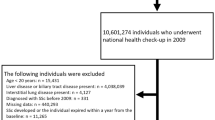Abstract
Because of evidence implicating oxidative stress in multiple sclerosis pathogenesis, it has been postulated that high levels of urate, a potent antioxidant, could reduce risk or favorably influence disease progression. We conducted a prospective study to determine whether serum urate levels contribute to prediction of multiple sclerosis risk. Analyses included 31 cases with blood collected a median of 1.9 years before multiple sclerosis onset from the Nurses’ Health Study and Nurses’ Health Study II cohorts, and 42 cases with collection a median of 14.5 years before onset from the Kaiser Permanente Northern California health plan cohort. Relative risks were estimated by unconditional logistic regression, including 26 controls in the Nurses’ cohorts and 130 controls in the Kaiser cohort. In analyses including only cases in the Nurses’ cohorts where blood was collected shortly before onset, there was a trend toward a lower risk of multiple sclerosis among individuals with higher serum urate, but the association was not significant (multivariable relative risk 0.52, 95% CI 0.22, 1.20, p value 0.13). In contrast, there was no evidence of a decline in risk with increasing serum urate in the Kaiser cohort where there was a longer period of time between blood collection and onset (multivariable relative risk 1.36, 95% CI 0.87, 2.14, p value 0.18). The results of this study suggest that serum urate is not a strong predictor of MS risk. This lack of association is consistent with the interpretation that the lower urate levels among multiple sclerosis cases are a consequence rather than a cause of the disease.

Similar content being viewed by others
References
Ascherio A, Munger KL, Lennette ET, Spiegelman D, Hernan MA, Olek MJ, Hankinson SE, Hunter DJ (2001) Epstein-barr virus antibodies and risk of multiple sclerosis: a prospective study. JAMA 286:3083–3088. doi:10.1001/jama.286.24.3083
DeLorenze GN, Munger KL, Lennette ET, Orentreich N, Vogelman JH, Ascherio A (2006) Epstein-barr virus and multiple sclerosis: evidence of association from a prospective study with long-term follow-up. Arch Neurol 63:839–844. doi:10.1001/archneur.63.6.noc50328
Friedman GD, Siegelaub AB (1980) Changes after quitting cigarette smoking. Circulation 61:716–723
Gilgun-Sherki Y, Melamed E, Offen D (2004) The role of oxidative stress in the pathogenesis of multiple sclerosis: the need for effective antioxidant therapy. J Neurol 251:261–268. doi:10.1007/s00415-004-0348-9
Hernan MA, Olek MJ, Ascherio A (1999) Geographic variation of MS incidence in two prospective studies of US women. Neurology 53:1711–1718
Hooper DC, Bagasra O, Marini JC, Zborek A, Ohnishi ST, Kean R, Champion JM, Sarker AB, Bobroski L, Farber JL, Akaike T, Maeda H, Koprowski H (1997) Prevention of experimental allergic encephalomyelitis by targeting nitric oxide and peroxynitrite: implications for the treatment of multiple sclerosis. Proc Natl Acad Sci USA 94:2528–2533. doi:10.1073/pnas.94.6.2528
Hooper DC, Spitsin S, Kean RB, Champion JM, Dickson GM, Chaudhry I, Koprowski H (1998) Uric acid, a natural scavenger of peroxynitrite, in experimental allergic encephalomyelitis and multiple sclerosis. Proc Natl Acad Sci USA 95:675–680. doi:10.1073/pnas.95.2.675
Kageyama N (1971) A direct colorimetric determination of uric acid in serum and urine with uricase–catalase system. Clin Chim Acta 31:421–426. doi:10.1016/0009-8981(71)90413-X
Knapp CM, Constantinescu CS, Tan JH, McLean R, Cherryman GR, Gottlob I (2004) Serum uric acid levels in optic neuritis. Mult Scler 10:278–280. doi:10.1191/1352458504ms1042oa
Koch M, De Keyser J (2006) Uric acid in multiple sclerosis. Neurol Res 28:316–319. doi:10.1179/016164106X98215
Rentzos M, Nikolaou C, Anagnostouli M, Rombos A, Tsakanikas K, Economou M, Dimitrakopoulos A, Karouli M, Vassilopoulos D (2006) Serum uric acid and multiple sclerosis. Clin Neurol Neurosurg 108:527–531. doi:10.1016/j.clineuro.2005.08.004
Saag KG, Choi H (2006) Epidemiology, risk factors, and lifestyle modifications for gout. Arthritis Res Ther 8(suppl 1):S2. doi:10.1186/ar1907
Spitsin S, Hooper DC, Leist T, Streletz LJ, Mikheeva T, Koprowskil H (2001) Inactivation of peroxynitrite in multiple sclerosis patients after oral administration of inosine may suggest possible approaches to therapy of the disease. Mult Scler 7:313–319
Spitsin SV, Scott GS, Kean RB, Mikheeva T, Hooper DC (2000) Protection of myelin basic protein immunized mice from free-radical mediated inflammatory cell invasion of the central nervous system by the natural peroxynitrite scavenger uric acid. Neurosci Lett 292:137–141. doi:10.1016/S0304-3940(00)01446-4
Toncev G, Milicic B, Toncev S, Samardzic G (2002) Serum uric acid levels in multiple sclerosis patients correlate with activity of disease and blood–brain barrier dysfunction. Eur J Neurol 9:221–226. doi:10.1046/j.1468-1331.2002.00384.x
Vaughan JH, Riise T, Rhodes GH, Nguyen MD, Barrett-Connor E, Nyland H (1996) An epstein barr virus-related cross reactive autoimmune response in multiple sclerosis in Norway. J Neuroimmunol 69:95–102. doi:10.1016/0165-5728(96)00069-0
Whiteman M, Halliwell B (1996) Protection against peroxynitrite-dependent tyrosine nitration and alpha 1-antiproteinase inactivation by ascorbic acid. A comparison with other biological antioxidants. Free Radic Res 25:275–283. doi:10.3109/10715769609149052
Acknowledgments
The project described was supported by Grant Numbers R01 NS047467 and R01 NS042194 from the National Institutes of Health. The content is solely the responsibility of the authors and does not necessarily represent the official views of the National Institutes of Health.
Author information
Authors and Affiliations
Corresponding author
Rights and permissions
About this article
Cite this article
Massa, J., O’Reilly, E., Munger, K.L. et al. Serum uric acid and risk of multiple sclerosis. J Neurol 256, 1643–1648 (2009). https://doi.org/10.1007/s00415-009-5170-y
Received:
Revised:
Accepted:
Published:
Issue Date:
DOI: https://doi.org/10.1007/s00415-009-5170-y



